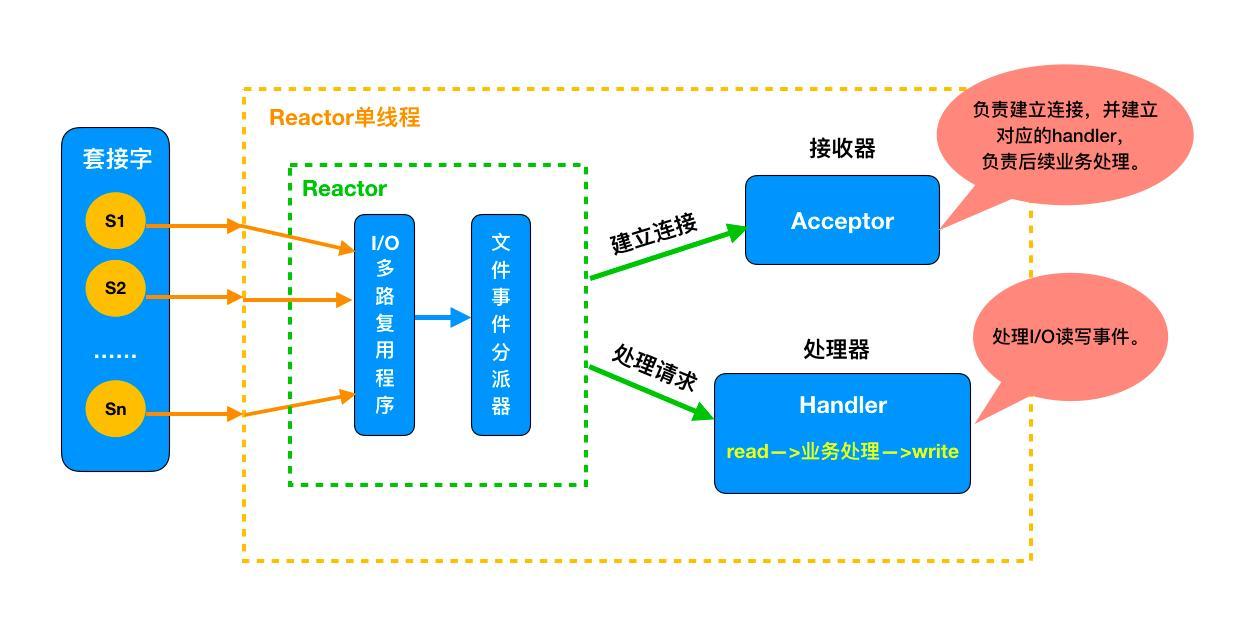
Redis 作为一个基于内存的缓存系统,一直以高性能著称,因没有上下文切换以及无锁操作,即使在单线程处理情况下,读速度仍可达到 11 万次 /s,写速度达到 8.1 万次 /s。但是,单线程的设计也给 Redis 带来一些问题:
- 只能使用 CPU 一个核;
- 如果删除的键过大(比如 Set 类型中有上百万个对象),会导致服务端阻塞好几秒;
- QPS 难再提高。
针对上面问题,Redis 在 4.0 版本以及 6.0 版本分别引入了 Lazy Free 以及 多线程IO ,逐步向多线程过渡,下面将会做详细介绍。
# 单线程原理
都说 Redis 是单线程的,那么单线程是如何体现的?如何支持客户端并发请求的?为了搞清这些问题,首先来了解下 Redis 是如何工作的。
Redis 服务器是一个事件驱动程序,服务器需要处理以下两类事件:
文件事件:Redis 服务器通过套接字与客户端(或者其他 Redis 服务器)进行连接,而文件事件就是服务器对套接字操作的抽象;服务器与客户端的通信会产生相应的文件事件,而服务器则通过监听并处理这些事件来完成一系列网络通信操作,比如连接accept,read,write,close等;时间事件:Redis 服务器中的一些操作(比如 serverCron 函数)需要在给定的时间点执行,而时间事件就是服务器对这类定时操作的抽象,比如过期键清理,服务状态统计等。
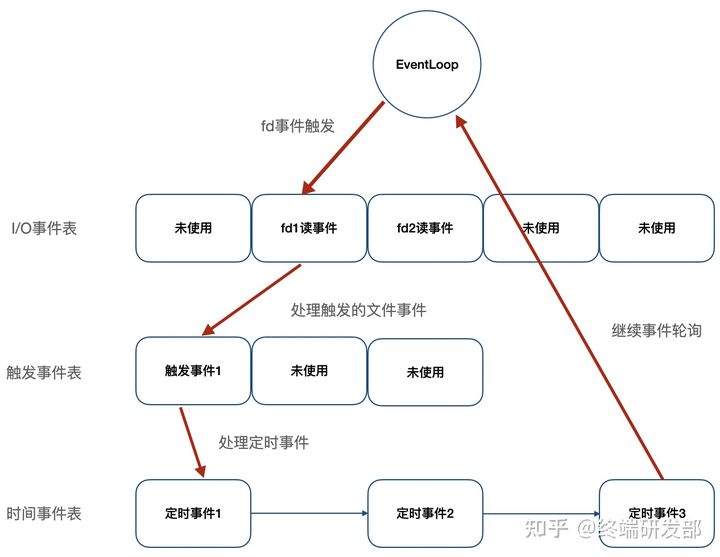
如上图,Redis 将文件事件和时间事件进行抽象,时间轮训器会监听 I/O 事件表,一旦有文件事件就绪,Redis 就会优先处理文件事件,接着处理时间事件。在上述所有事件处理上,Redis 都是以 单线程 形式处理,所以说 Redis 是单线程的。此外,如下图,Redis 基于 Reactor 模式开发了自己的 I/O 事件处理器,也就是文件事件处理器,Redis 在 I/O 事件处理上,采用了 I/O 多路复用技术,同时监听多个套接字,并为套接字关联不同的事件处理函数,通过一个线程实现了多客户端并发处理。
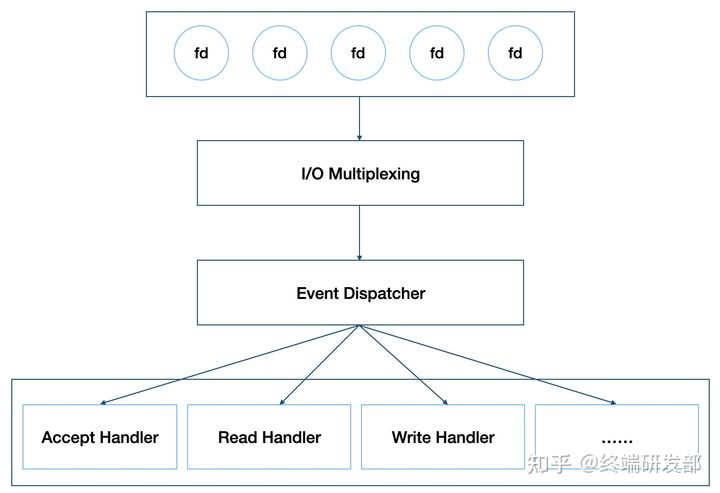
正因为这样的设计,在数据处理上避免了加锁操作,既使得实现上足够简洁,也保证了其高性能。当然,Redis 单线程只是指其在事件处理上,实际上,Redis 也并不是单线程的,比如生成 RDB 文件,就会 fork 一个子进程来实现,当然,这不是本文要讨论的内容。
# Lazy Free 机制
如上所知,Redis 在处理客户端命令时是以单线程形式运行,而且处理速度很快,期间不会响应其他客户端请求,但若客户端向 Redis 发送一条耗时较长的命令,比如删除一个含有上百万对象的 Set 键,或者执行 flushdb,flushall 操作,Redis 服务器需要回收大量的内存空间,导致服务器卡住好几秒,对负载较高的缓存系统而言将会是个灾难。为了解决这个问题,在 Redis 4.0 版本引入了 Lazy Free ,将 慢操作 异步化,这也是在事件处理上向多线程迈进了一步。
如作者在其博客中所述,要解决 慢操作 ,可以采用渐进式处理,即增加一个时间事件,比如在删除一个具有上百万个对象的 Set 键时,每次只删除大键中的一部分数据,最终实现大键的删除。但是,该方案可能会导致回收速度赶不上创建速度,最终导致内存耗尽。因此,Redis 最终实现上是将大键的删除操作异步化,采用非阻塞删除(对应命令 UNLINK ),大键的空间回收交由单独线程实现,主线程只做关系解除,可以快速返回,继续处理其他事件,避免服务器长时间阻塞。
以删除( DEL 命令)为例,看看 Redis 是如何实现的,下面就是删除函数的入口,其中, lazyfree_lazy_user_del 是是否修改 DEL 命令的默认行为,一旦开启,执行 DEL 时将会以 UNLINK 形式执行。
void delCommand(client *c) { | |
delGenericCommand(c,server.lazyfree_lazy_user_del); | |
} | |
/* This command implements DEL and LAZYDEL. */ | |
void delGenericCommand(client *c, int lazy) { | |
int numdel = 0, j; | |
for (j = 1; j < c->argc; j++) { | |
expireIfNeeded(c->db,c->argv[j]); | |
// 根据配置确定DEL在执行时是否以lazy形式执行 | |
int deleted = lazy ? dbAsyncDelete(c->db,c->argv[j]) : | |
dbSyncDelete(c->db,c->argv[j]); | |
if (deleted) { | |
signalModifiedKey(c,c->db,c->argv[j]); | |
notifyKeyspaceEvent(NOTIFY_GENERIC, | |
"del",c->argv[j],c->db->id); | |
server.dirty++; | |
numdel++; | |
} | |
} | |
addReplyLongLong(c,numdel); | |
} |
同步删除很简单,只要把 key 和 value 删除,如果有内层引用,则进行递归删除,这里不做介绍。下面看下异步删除,Redis 在回收对象时,会先计算回收收益,只有回收收益在超过一定值时,采用封装成 Job 加入到异步处理队列中,否则直接同步回收,这样效率更高。回收收益计算也很简单,比如 String 类型,回收收益值就是 1,而 Set 类型,回收收益就是集合中元素个数。
/* Delete a key, value, and associated expiration entry if any, from the DB. | |
* If there are enough allocations to free the value object may be put into | |
* a lazy free list instead of being freed synchronously. The lazy free list | |
* will be reclaimed in a different bio.c thread. */ | |
#define LAZYFREE_THRESHOLD 64 | |
int dbAsyncDelete(redisDb *db, robj *key) { | |
/* Deleting an entry from the expires dict will not free the sds of | |
* the key, because it is shared with the main dictionary. */ | |
if (dictSize(db->expires) > 0) dictDelete(db->expires,key->ptr); | |
/* If the value is composed of a few allocations, to free in a lazy way | |
* is actually just slower... So under a certain limit we just free | |
* the object synchronously. */ | |
dictEntry *de = dictUnlink(db->dict,key->ptr); | |
if (de) { | |
robj *val = dictGetVal(de); | |
// 计算value的回收收益 | |
size_t free_effort = lazyfreeGetFreeEffort(val); | |
/* If releasing the object is too much work, do it in the background | |
* by adding the object to the lazy free list. | |
* Note that if the object is shared, to reclaim it now it is not | |
* possible. This rarely happens, however sometimes the implementation | |
* of parts of the Redis core may call incrRefCount() to protect | |
* objects, and then call dbDelete(). In this case we'll fall | |
* through and reach the dictFreeUnlinkedEntry() call, that will be | |
* equivalent to just calling decrRefCount(). */ | |
// 只有回收收益超过一定值,才会执行异步删除,否则还是会退化到同步删除 | |
if (free_effort > LAZYFREE_THRESHOLD && val->refcount == 1) { | |
atomicIncr(lazyfree_objects,1); | |
bioCreateBackgroundJob(BIO_LAZY_FREE,val,NULL,NULL); | |
dictSetVal(db->dict,de,NULL); | |
} | |
} | |
/* Release the key-val pair, or just the key if we set the val | |
* field to NULL in order to lazy free it later. */ | |
if (de) { | |
dictFreeUnlinkedEntry(db->dict,de); | |
if (server.cluster_enabled) slotToKeyDel(key->ptr); | |
return 1; | |
} else { | |
return 0; | |
} | |
} |
通过引入 a threaded lazy free ,Redis 实现了对于 Slow Operation 的 Lazy 操作,避免了在大键删除, FLUSHALL , FLUSHDB 时导致服务器阻塞。当然,在实现该功能时,不仅引入了 lazy free 线程,也对 Redis 聚合类型在存储结构上进行改进。因为 Redis 内部使用了很多共享对象,比如客户端输出缓存。当然,Redis 并未使用加锁来避免线程冲突,锁竞争会导致性能下降,而是去掉了共享对象,直接采用数据拷贝,如下,在 3.x 和 6.x 中 ZSet 节点 value 的不同实现。
// 3.2.5版本ZSet节点实现,value定义robj *obj | |
/* ZSETs use a specialized version of Skiplists */ | |
typedef struct zskiplistNode { | |
robj *obj; | |
double score; | |
struct zskiplistNode *backward; | |
struct zskiplistLevel { | |
struct zskiplistNode *forward; | |
unsigned int span; | |
} level[]; | |
} zskiplistNode; | |
// 6.0.10版本ZSet节点实现,value定义为sds ele | |
/* ZSETs use a specialized version of Skiplists */ | |
typedef struct zskiplistNode { | |
sds ele; | |
double score; | |
struct zskiplistNode *backward; | |
struct zskiplistLevel { | |
struct zskiplistNode *forward; | |
unsigned long span; | |
} level[]; | |
} zskiplistNode; |
去掉共享对象,不但实现了 lazy free 功能,也为 Redis 向多线程跨进带来了可能,正如作者所述:
Now that values of aggregated data types are fully unshared, and client output buffers don’t contain shared objects as well, there is a lot to exploit. For example it is finally possible to implement threaded I/O in Redis, so that different clients are served by different threads. This means that we’ll have a global lock only when accessing the database, but the clients read/write syscalls and even the parsing of the command the client is sending, can happen in different threads.
# 多线程 I/O 及其局限性
Redis 在 4.0 版本引入了 Lazy Free ,自此 Redis 有了一个 Lazy Free 线程专门用于大键的回收,同时,也去掉了聚合类型的共享对象,这为多线程带来可能,Redis 也不负众望,在 6.0 版本实现了 多线程I/O 。
# 实现原理
正如官方以前的回复,Redis 的性能瓶颈并不在 CPU 上,而是在内存和网络上。因此 6.0 发布的多线程并未将事件处理改成多线程,而是在 I/O 上,此外,如果把事件处理改成多线程,不但会导致锁竞争,而且会有频繁的上下文切换,即使用分段锁来减少竞争,对 Redis 内核也会有较大改动,性能也不一定有明显提升。
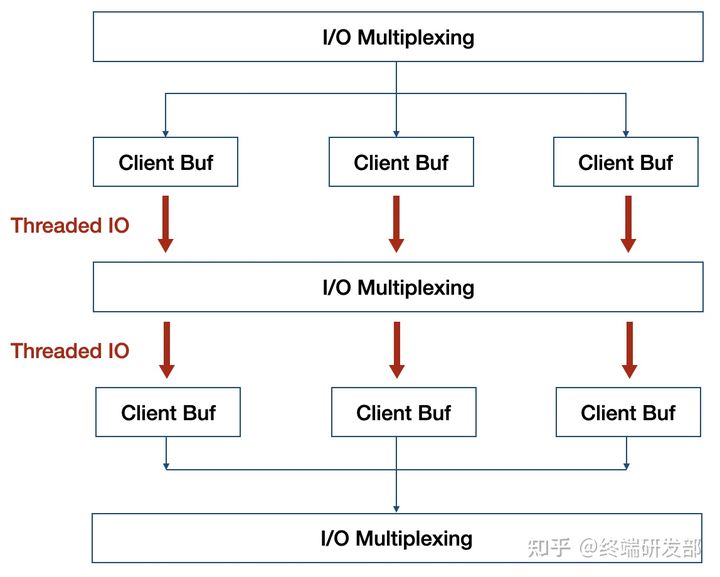
如上图红色部分,就是 Redis 实现的多线程部分,利用多核来分担 I/O 读写负荷。在 事件处理线程 每次获取到可读事件时,会将所有就绪的读事件分配给 I/O线程 ,并进行等待,在所有 I/O线程 完成读操作后, 事件处理线程 开始执行任务处理,在处理结束后,同样将写事件分配给 I/O线程 ,等待所有 I/O 线程完成写操作。
以读事件处理为例,看下 事件处理线程 任务分配流程:
int handleClientsWithPendingReadsUsingThreads(void) { | |
... | |
/* Distribute the clients across N different lists. */ | |
listIter li; | |
listNode *ln; | |
listRewind(server.clients_pending_read,&li); | |
int item_id = 0; | |
// 将等待处理的客户端分配给I/O线程 | |
while((ln = listNext(&li))) { | |
client *c = listNodeValue(ln); | |
int target_id = item_id % server.io_threads_num; | |
listAddNodeTail(io_threads_list[target_id],c); | |
item_id++; | |
} | |
... | |
/* Wait for all the other threads to end their work. */ | |
// 轮训等待所有I/O线程处理完 | |
while(1) { | |
unsigned long pending = 0; | |
for (int j = 1; j < server.io_threads_num; j++) | |
pending += io_threads_pending[j]; | |
if (pending == 0) break; | |
} | |
... | |
return processed; | |
} |
I/O线程 处理流程:
void *IOThreadMain(void *myid) { | |
... | |
while(1) { | |
... | |
// I/O线程执行读写操作 | |
while((ln = listNext(&li))) { | |
client *c = listNodeValue(ln); | |
// io_threads_op判断是读还是写事件 | |
if (io_threads_op == IO_THREADS_OP_WRITE) { | |
writeToClient(c,0); | |
} else if (io_threads_op == IO_THREADS_OP_READ) { | |
readQueryFromClient(c->conn); | |
} else { | |
serverPanic("io_threads_op value is unknown"); | |
} | |
} | |
listEmpty(io_threads_list[id]); | |
io_threads_pending[id] = 0; | |
if (tio_debug) printf("[%ld] Done\n", id); | |
} | |
} |
# 局限性
从上面实现上看,6.0 版本的多线程并非彻底的多线程, I/O线程 只能同时执行读或者同时执行写操作,期间 事件处理线程 一直处于等待状态,并非流水线模型,有很多轮训等待开销。
# Tair 多线程实现原理
相较于 6.0 版本的多线程,Tair 的多线程实现更加优雅。如下图,Tair 的 Main Thread 负责客户端连接建立等, IO Thread 负责请求读取、响应发送、命令解析等, Worker Thread 线程专门用于事件处理。 IO Thread 读取用户的请求并进行解析,之后将解析结果以命令的形式放在队列中发送给 Worker Thread 处理。 Worker Thread 将命令处理完成后生成响应,通过另一条队列发送给 IO Thread 。为了提高线程的并行度, IO Thread 和 Worker Thread 之间采用无锁队列和管道进行数据交换,整体性能会更好。
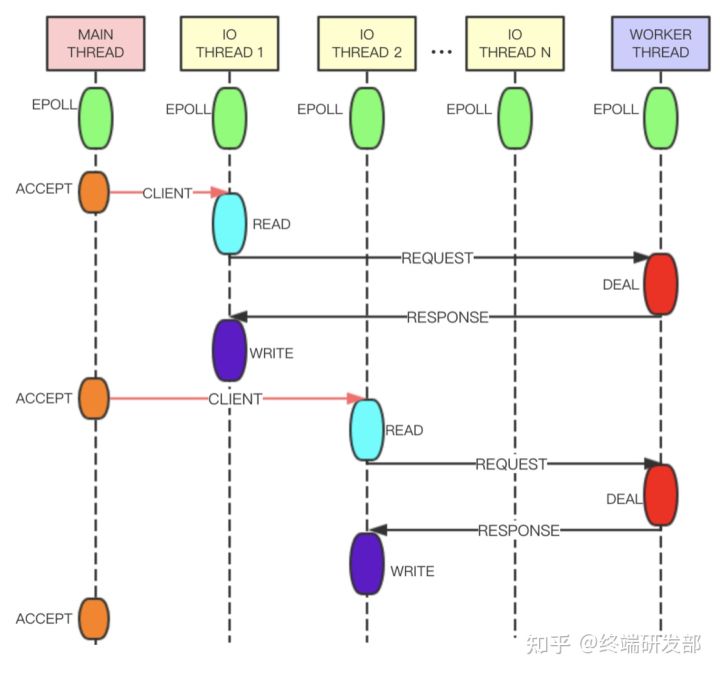
Tair 多线程实现 http://note.youdao.com/yws/res/69698/A1936D930F2845008AF77FE43013303C
# 小结
Redis 4.0 引入 Lazy Free 线程,解决了诸如大键删除导致服务器阻塞问题,在 6.0 版本引入了 I/O Thread 线程,正式实现了多线程,但相较于 Tair,并不太优雅,而且性能提升上并不多,压测看,多线程版本性能是单线程版本的 2 倍,Tair 多线程版本则是单线程版本的 3 倍。在作者看来,Redis 多线程无非两种思路, I/O threading 和 Slow commands threading ,正如作者在其博客中所说:
I/O threading is not going to happen in Redis AFAIK, because after much consideration I think it’s a lot of complexity without a good reason. Many Redis setups are network or memory bound actually. Additionally I really believe in a share-nothing setup, so the way I want to scale Redis is by improving the support for multiple Redis instances to be executed in the same host, especially via Redis Cluster.
What instead I really want a lot is slow operations threading, and with the Redis modules system we already are in the right direction. However in the future (not sure if in Redis 6 or 7) we’ll get key-level locking in the module system so that threads can completely acquire control of a key to process slow operations. Now modules can implement commands and can create a reply for the client in a completely separated way, but still to access the shared data set a global lock is needed: this will go away.
Redis 作者更倾向于采用集群方式来解决 I/O threading ,尤其是在 6.0 版本发布的原生 Redis Cluster Proxy 背景下,使得集群更加易用。此外,作者更倾向于 slow operations threading (比如 4.0 版本发布的 Lazy Free )来解决多线程问题。后续版本,是否会将 IO Thread 实现的更加完善,采用 Module 实现对慢操作的优化,着实值得期待。
参考资料
- Lazy Redis is better Redis
- An update about Redis developments in 2019
- [阿里云 Redis 多线程性能提升思路解析
# 补充
# Redis 线程中经常提到 IO 多路复用,如何理解?
这是 IO 模型的一种,即经典的 Reactor 设计模式,有时也称为异步阻塞 IO。
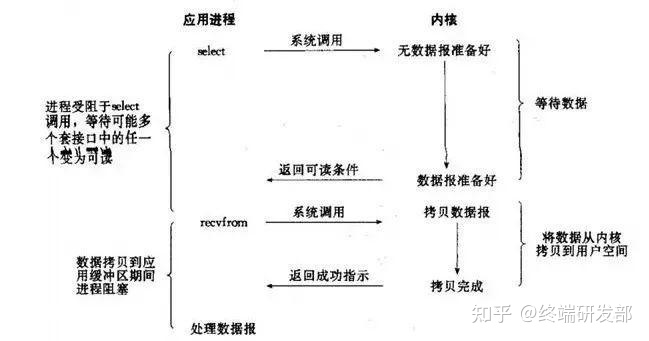
多路指的是多个 Socket 连接,复用指的是复用一个线程。多路复用主要有三种技术:Select,Poll,Epoll。
Epoll 是最新的也是目前最好的多路复用技术。采用多路 I/O 复用技术可以让单个线程高效的处理多个连接请求(尽量减少网络 IO 的时间消耗),且 Redis 在内存中操作数据的速度非常快(内存内的操作不会成为这里的性能瓶颈),主要以上两点造就了 Redis 具有很高的吞吐量。